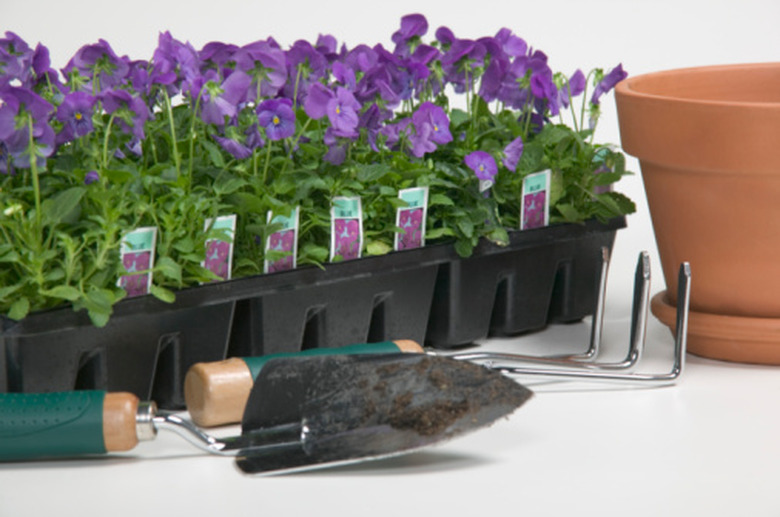How To Propagate A Purple Passion Plant
The purple passion plant (Gynura aurantiaca) gets its common name from the deep purple coloring of the stems and leaves. The coloring is not actually contained in the stems and leaves, but on tiny, purple, hair-like growths that emerge from them. These projections also give the plant a velvety feel. The purple passion plant is most often propagated by cuttings, which root quickly if the proper growing conditions are maintained.
Step 1
Locate an existing purple passion plant that is free of disease to take a cutting from. You can successfully take cuttings any time of the year.
Step 2
Pick up one stem and trace it back 1 1/2 to 3 inches. Cut the stem off straight across using hand pruners.
- The purple passion plant (Gynura aurantiaca) gets its common name from the deep purple coloring of the stems and leaves.
- The coloring is not actually contained in the stems and leaves, but on tiny, purple, hair-like growths that emerge from them.
Step 3
Fill a 4- to 5-inch diameter plant pot with a mixture of half peat, one-fourth finely chopped bark and one-fourth perlite. Mix the contents well to combine.
Step 4
Dig a 1-inch deep hole in the top of the soil mixture using your finger. Insert the cut end of the purple passion plant cutting into the hole and press the soil up around it.
Step 5
Water the soil until it is moist all the way to the bottom of the pot.
Step 6
Place the pot in an indoor location that is well-lit but does not receive direct sun. If the temperature is below 75 degrees Fahrenheit, set the pot on a heating mat set to this temperature and leave it on constantly.
- Fill a 4- to 5-inch diameter plant pot with a mixture of half peat, one-fourth finely chopped bark and one-fourth perlite.
- Dig a 1-inch deep hole in the top of the soil mixture using your finger.
Step 7
Spray the top of the soil lightly with water whenever it starts to dry out. The purple passion plant cutting will develop roots in approximately one to three weeks.
Grow A Purple Passion Plant
Houseplants can be so ho-hum. Houseplant experts love this colorful purple fuzzy plant for its versatility, low maintenance and impressive purple and green hues that range from dark to light. It is part of the daisy family and hails from the humid areas of India. The vines can grow up to 8 feet long but may lose their vibrant coloring. The plant can be grown outdoors in plenty of shade and humidity. It is nontoxic and requires little pest control, with only mealybugs and aphids to contend with on occasion. If you are not sure how moist to keep the plant, experts recommend putting three to four ice cubes on the top of the soil once a week for a small indoor plant. Once you have the soil, light and the right water level in place, the purple passion plant doesn't need to be fussed over to thrive. A purple passion plant left to its own devices will show off lengthy branches of wide, purple-sheened leaves. The purple passion plant will keep its attractive leaves for two to three years before it needs attention. The purple passion plant can easily be propagated through root cuttings.
- Spray the top of the soil lightly with water whenever it starts to dry out.
- A purple passion plant left to its own devices will show off lengthy branches of wide, purple-sheened leaves.
- The purple passion plant will keep its attractive leaves for two to three years before it needs attention.
Things Needed
- Hand pruners
- 4- to 5-inch diameter plant pot
- Peat
- Finely chopped bark
- Perlite
- Heating mat (optional)
- Spray bottle
References
- University of Florida: Cultural Guidelines for Commercial Production of Purple Passion Plant (Gynura Aurantiaca)
- Greenhouse Product News: Producing Potted Purple Velvet Plants
- Costa Farms: Purple Passion Plant
- Houseplant 411: Purple Velvet Plant
- Epic Gardening: Purple Velvet Plant (Gynura Aurantiaca) Care Guide
